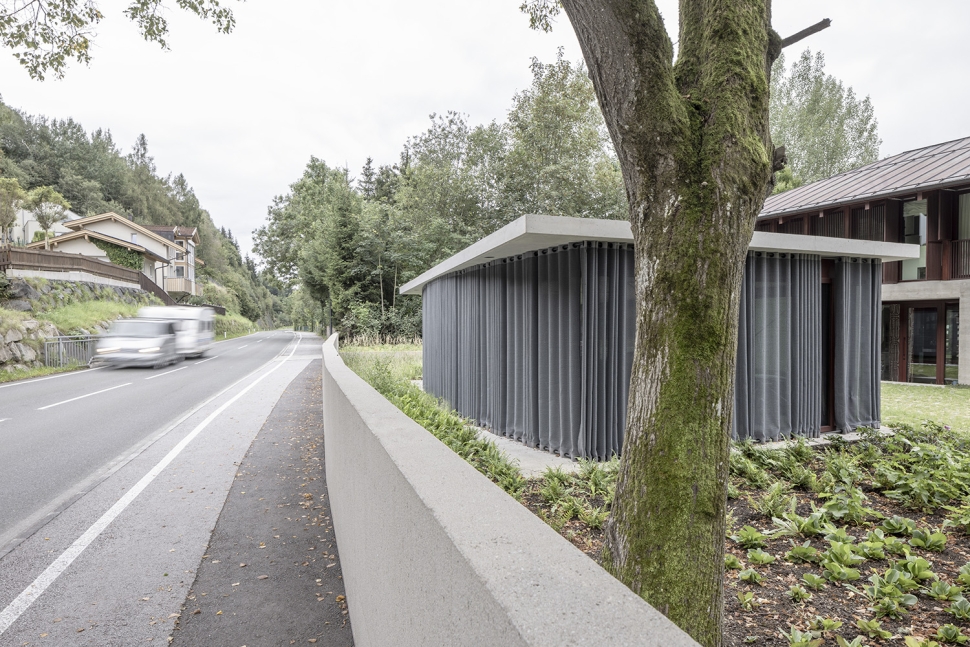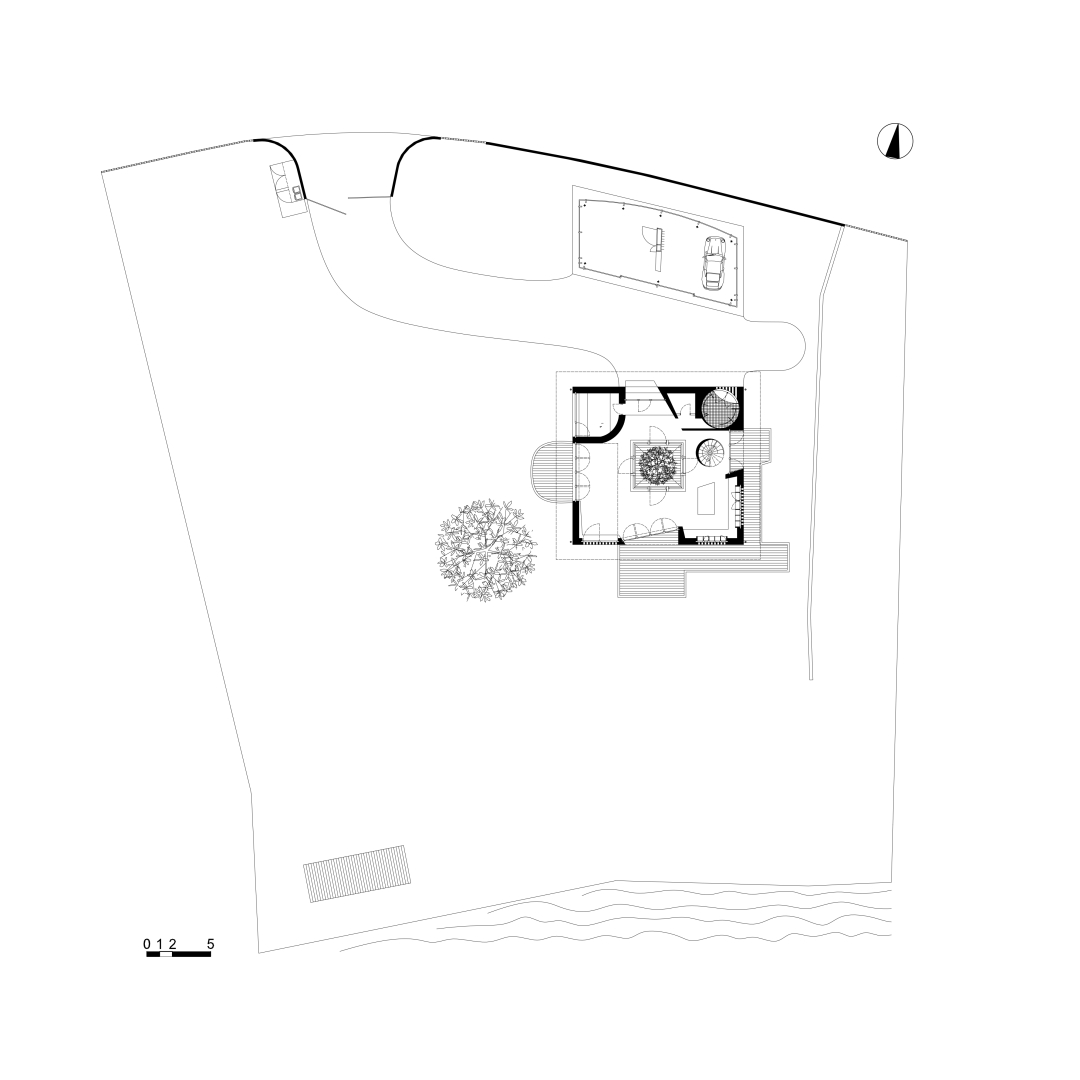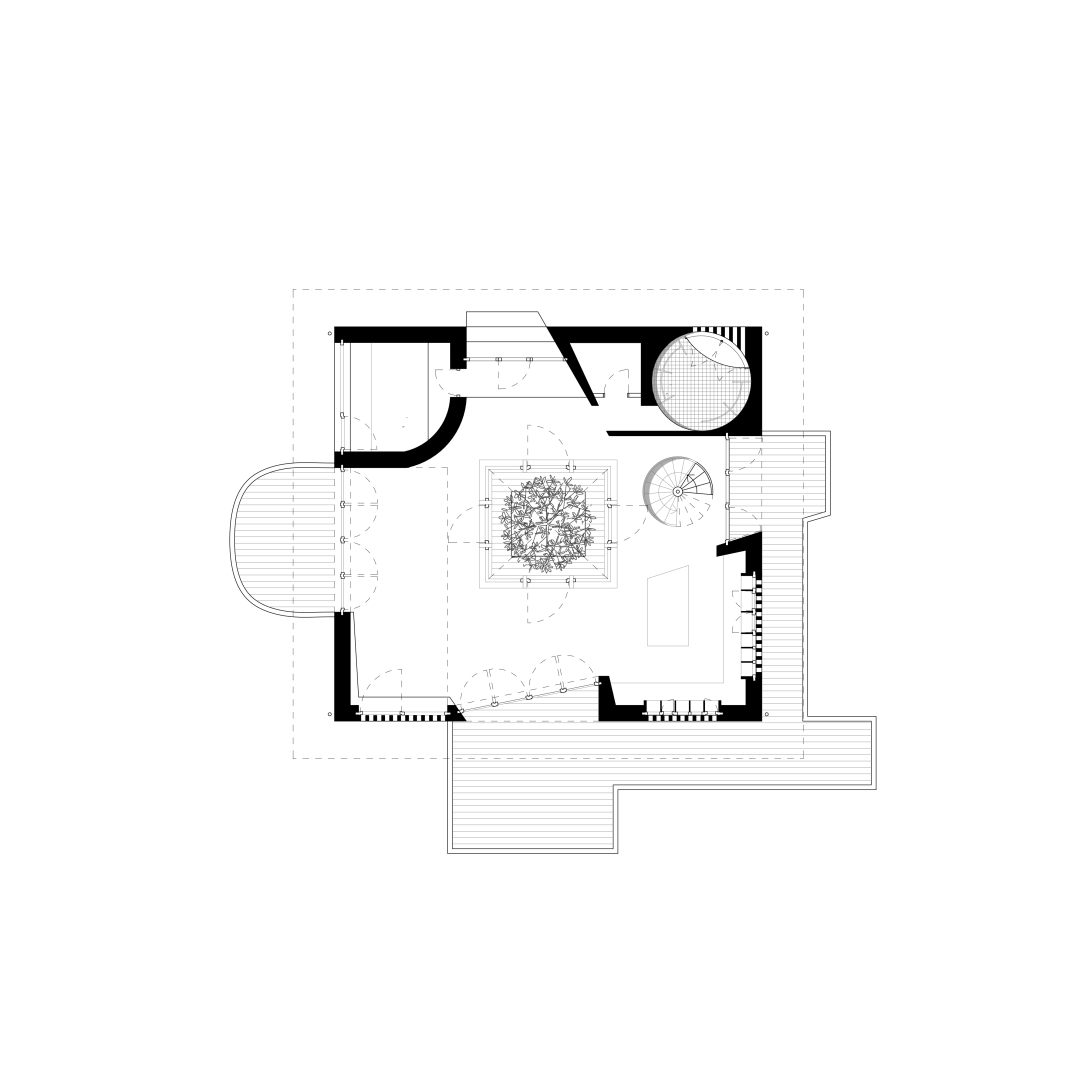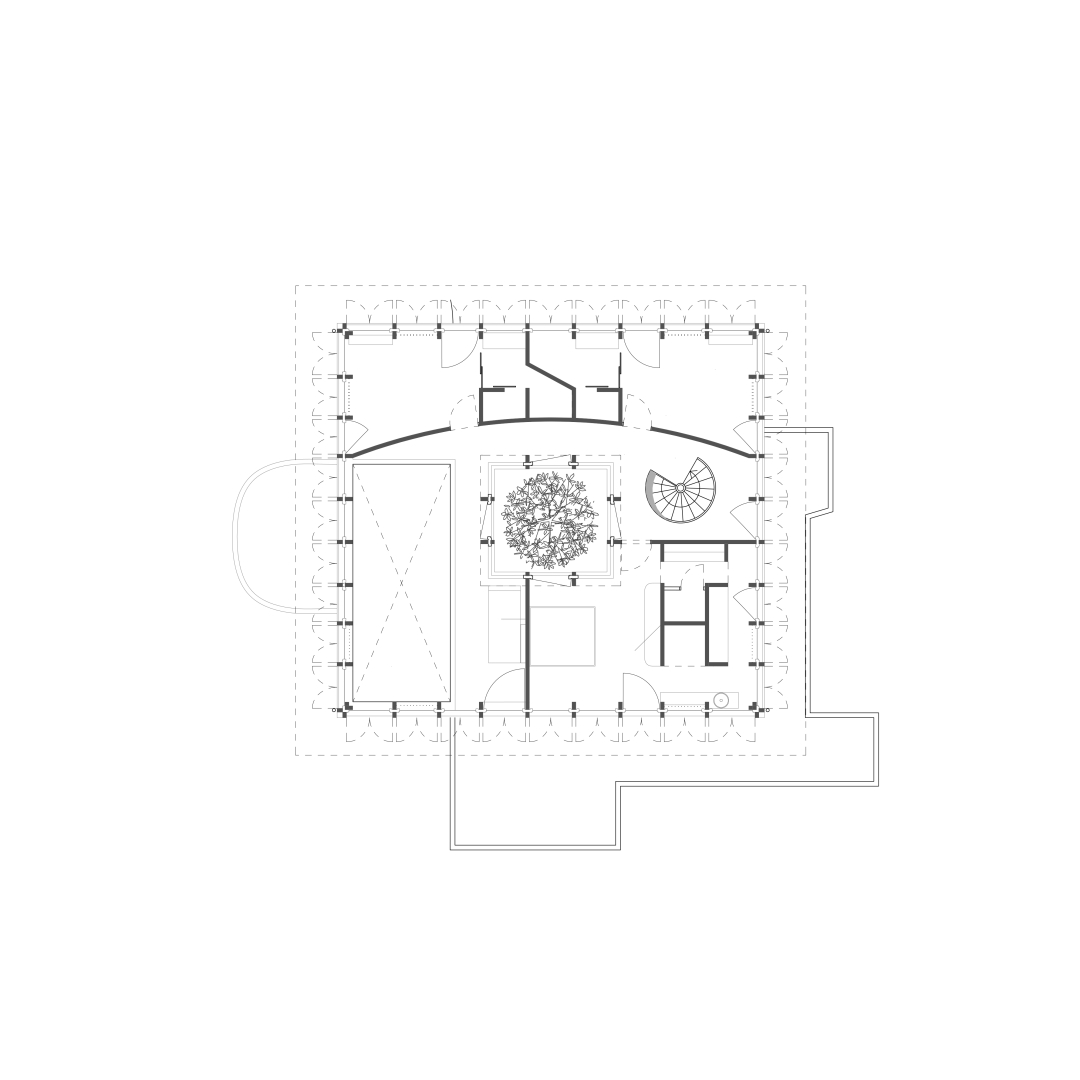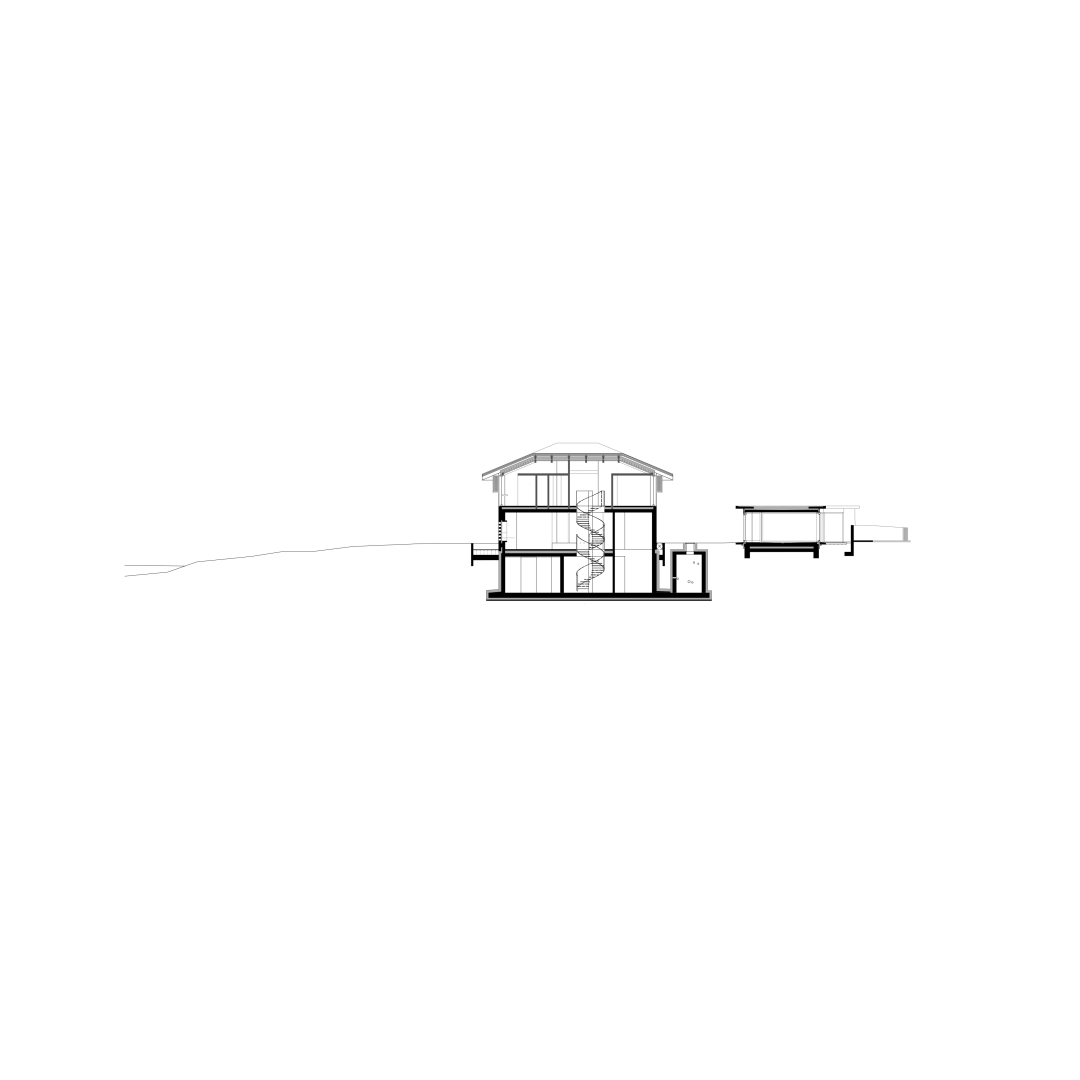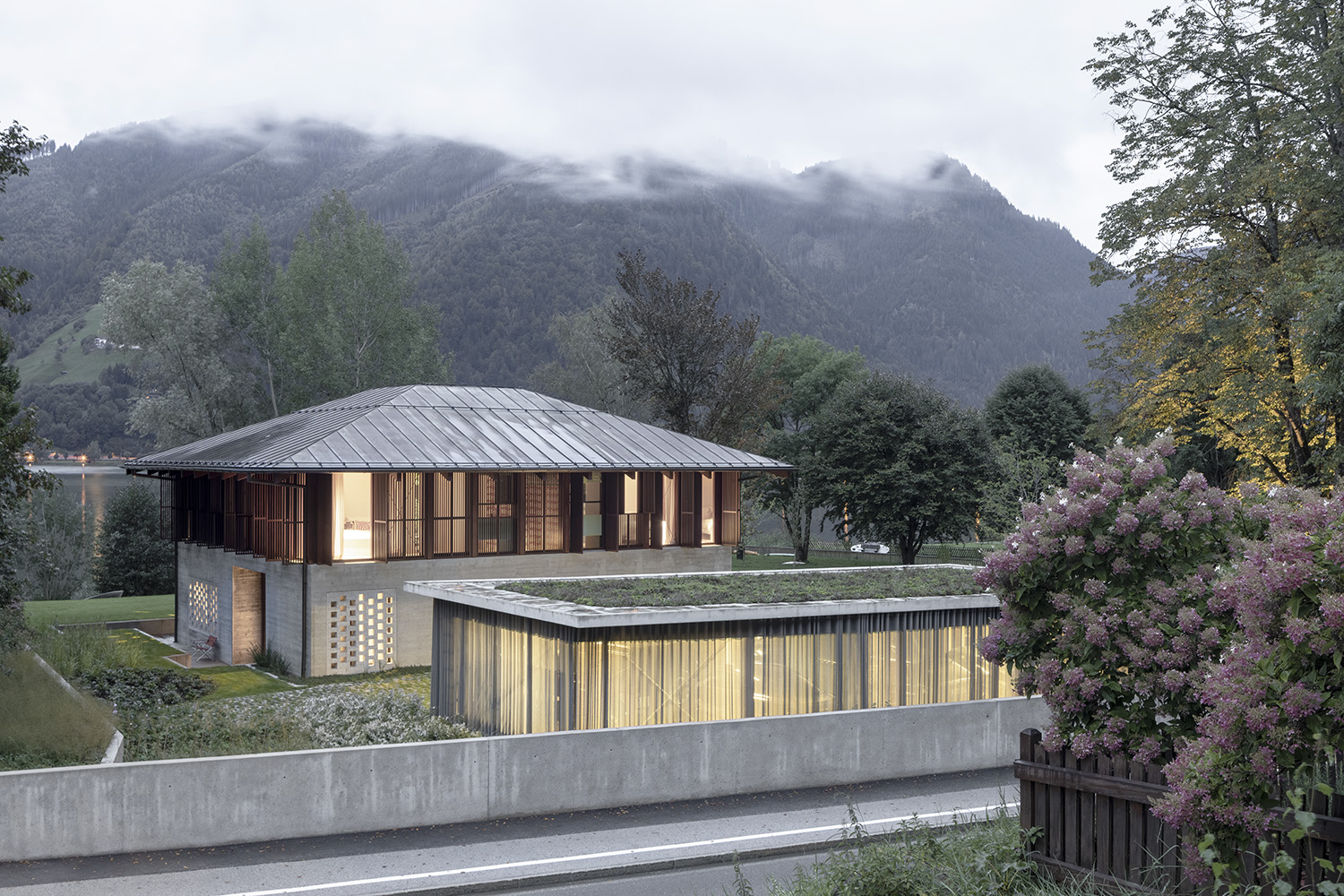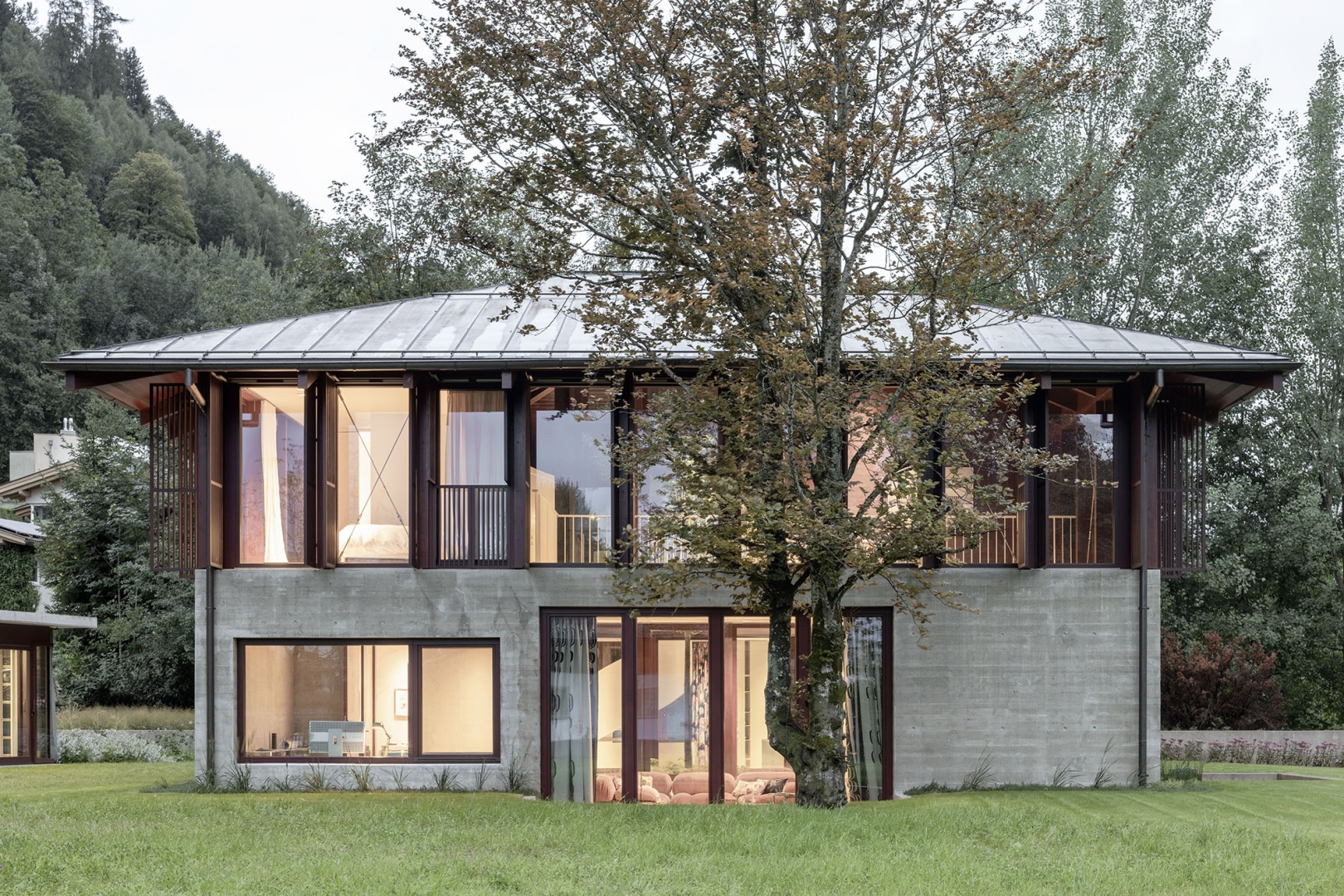Pick up the cadaver of the word c-o-m-p-l-e-x and drive it to the Austrian Alps. Tucked away on Lake Zell is a house to which that royal among the has-beens of buzzwords, depleted of meaning from years of overuse, might genuinely apply.
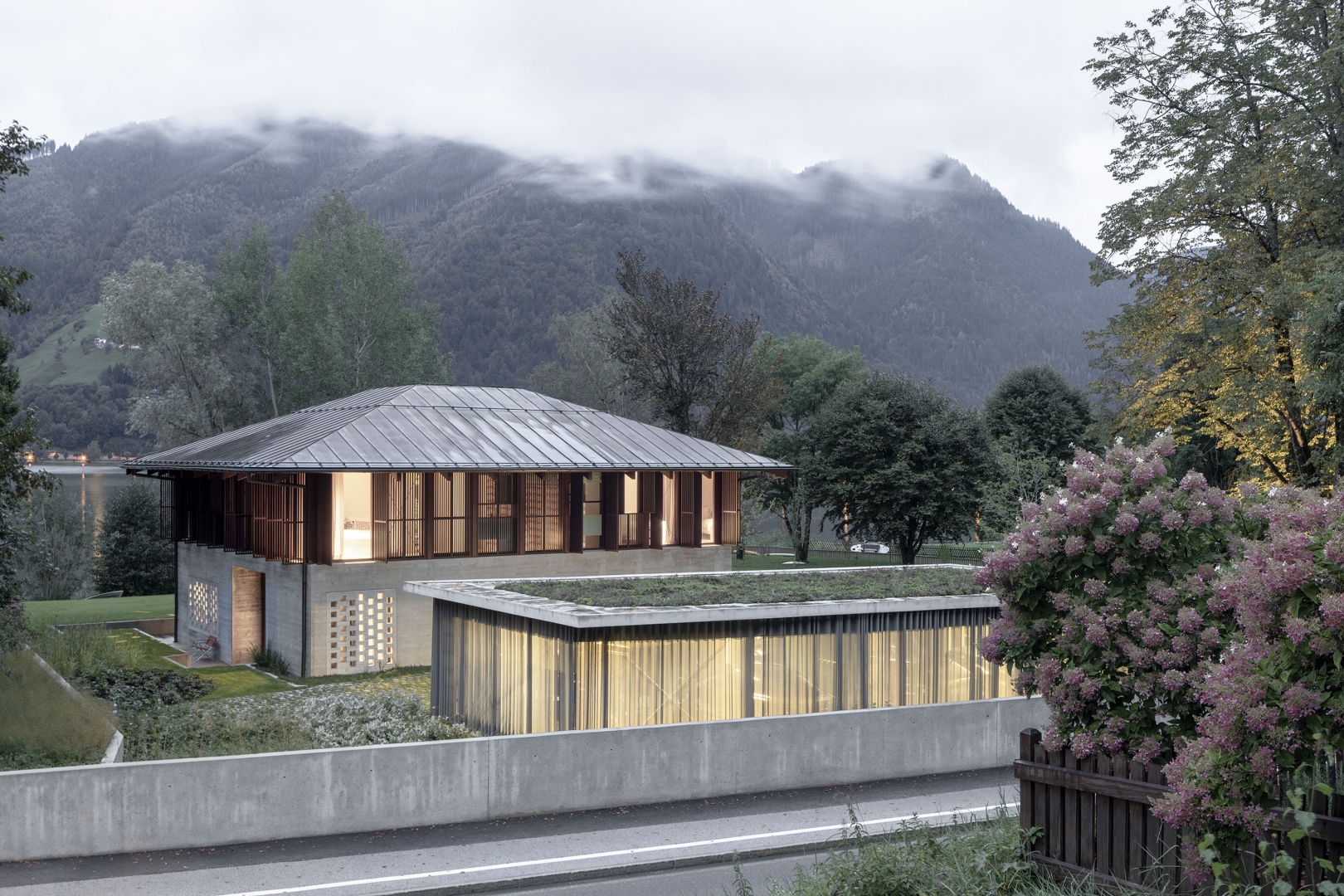
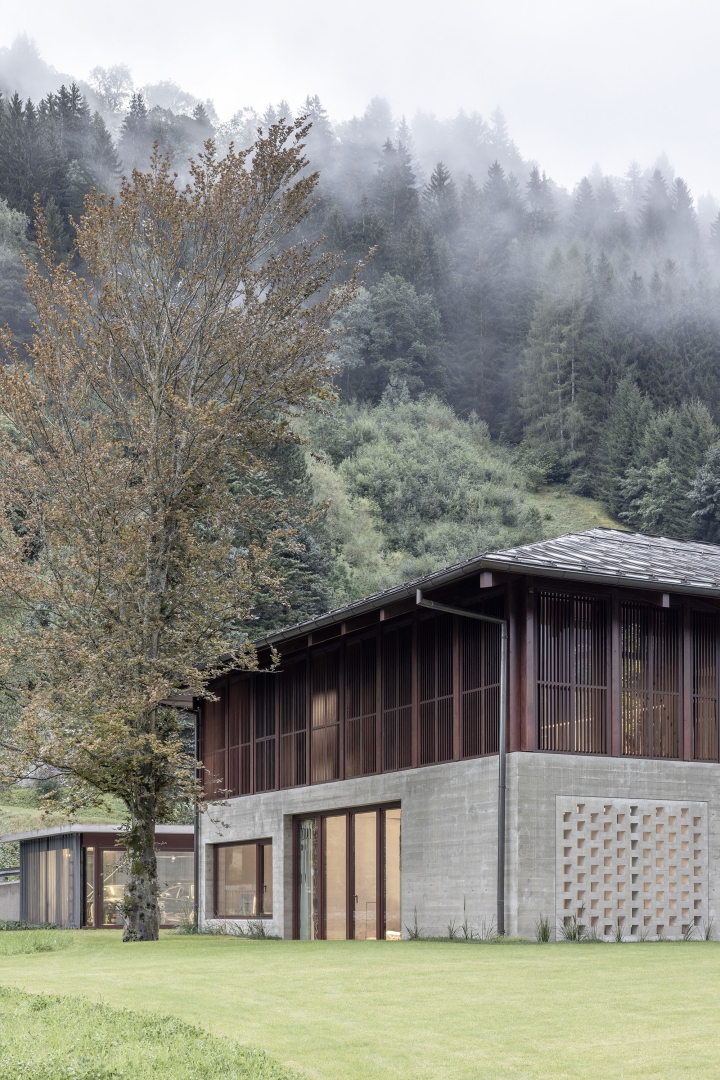
The project’s starting point was formal and postmodern: Louis Kahn’s Trenton Bath House (NJ, 1955). Thus the house’s pyramid hip roof sits on a square base. Thus the distribution of the ground floor. Thus the courtyard takes its cue from the opening in Kahn’s roof.
But the base demanded primitive powers that the concrete blocks at Trenton would not provide. So monolithic concrete was summoned, fifty centimeters thick. Monolithic with a sustainable twist: conventional concrete in the region relies on a two-layer scheme, with a non-reusable insulating material sandwiched in between. Instead, this house employs insulating concrete, where reused material is scattered in the mixture for thermal insulation. The whole structure can safely decompose in the case of demolition. And having done away with the traditional insulating layer, window and door frames can be placed freely within the reveals.
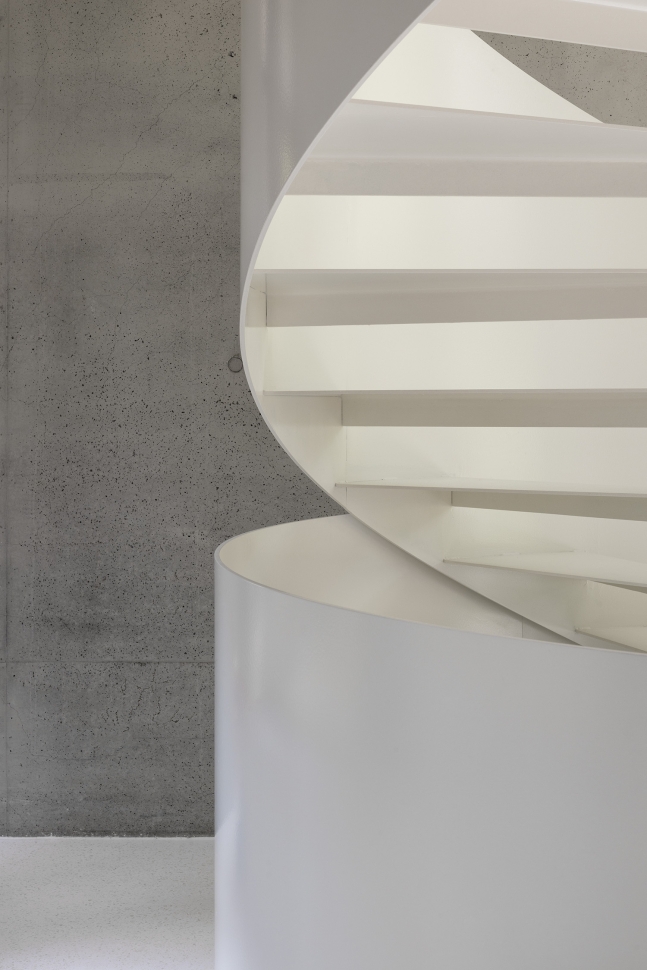
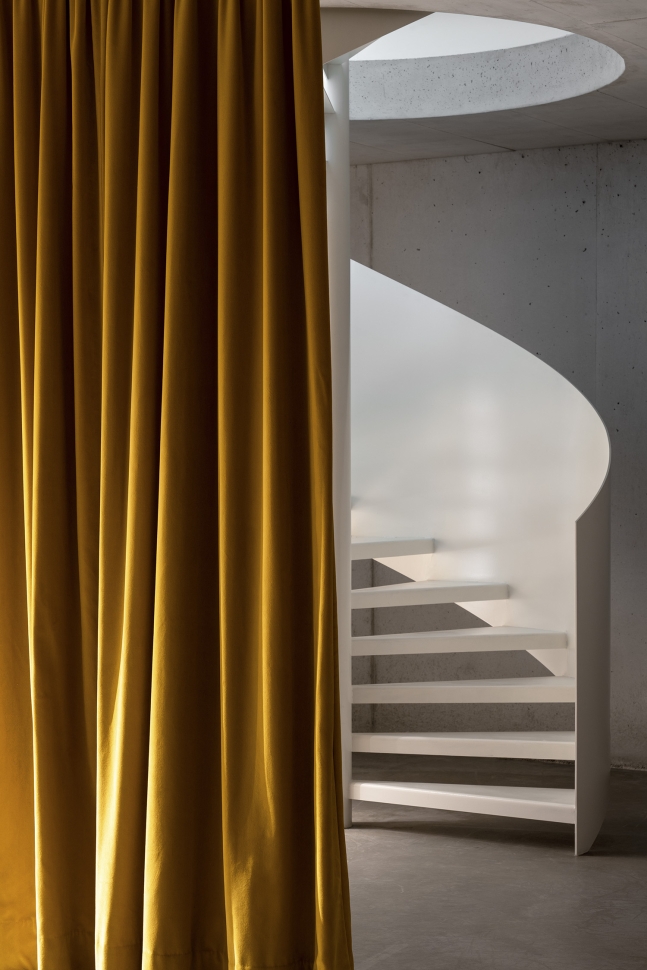
Such thick walls afford a categorical impression of stability, which the design then revels in finding counterpoints to. Thus the litany of strategies to balance the taciturn polished concrete inside: a lush yellow curtain in the basement, colorful curtains on the ground floor, a joyful carpet in the hallway above, bathrooms covered in bright colored tiles, and a waterproof curtain that wraps around the garage. And articulating all three levels: a white, steel, spiraling staircase, as thin as possible, emphasizing the tones one hardly notes in the frigid concrete walls.
But if the base looks to Kahn, the wooden first floor looks to the Far East. The delicate shutters balance the heavy concrete below and provide a way to look out that is markedly different from that of the ground floor. More uncertain. And when the shutters are pivoted on hot summer days, the openness of the first floor can be nearly absolute.
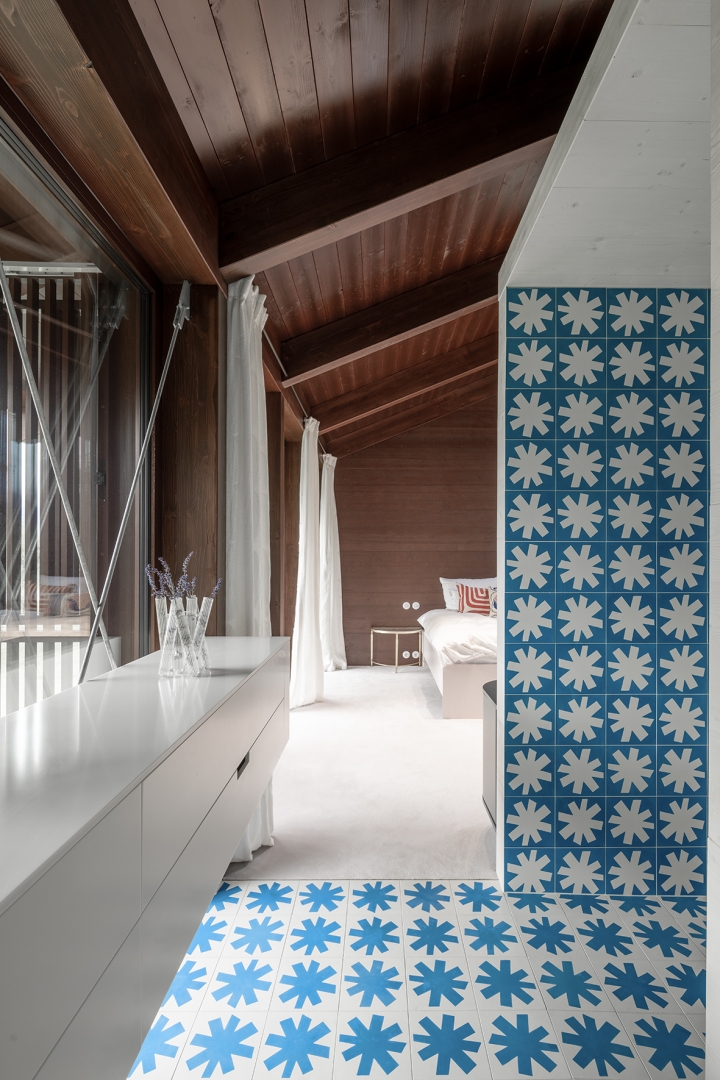
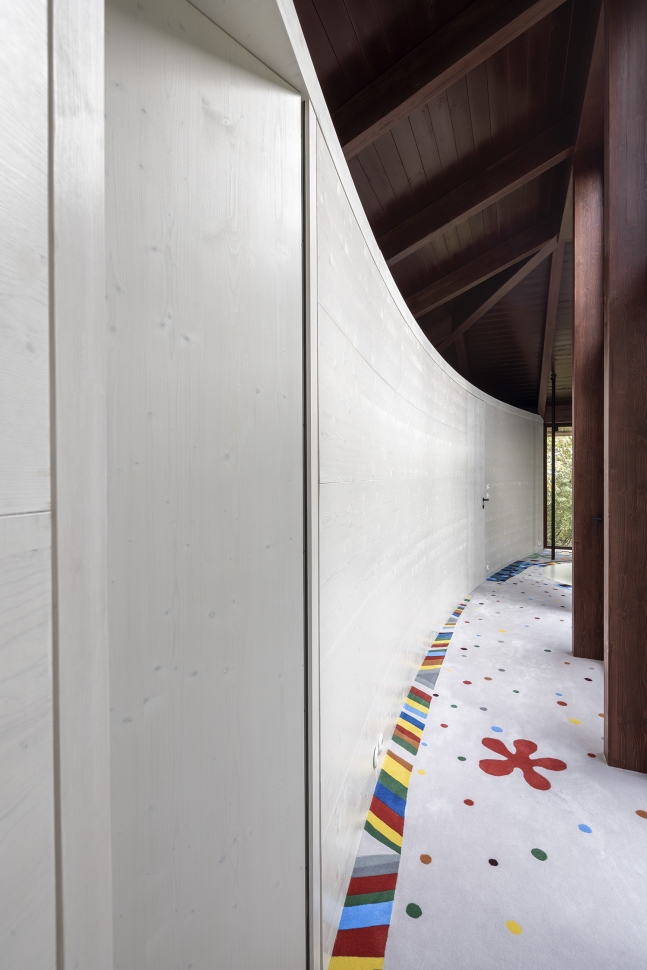
Oddly, and despite the juxtaposition, the building manages to feel somewhat classical. Classical in the way it administers weight so that it sits and stares stately at the pristine lake and the old town across.Classical in its shape. It is rather classical too because all elevations are nearly identical, their porticos right in the middle or slightly off-center. It’s unexpectedly symmetrical, slightly Palladian, which could hardly be achieved were the garage not detached, and so what looks like a sleek lounge is in fact parking – a pavilion for the automobile. A sort of villa + folly solution and the tension between the two volumes end up determining where the entrance to the house is.
And accidentally the house also reminds one of Frank Lloyd Wright - Wright’s Westcott House (1908) and DeRhodes House (1906) principally, with their wooden first floors sitting on sturdier bases. The strong whiff of Wright is of course a likely outcome of the invocation of Japan, Wright’s work being especially indebted to that country.
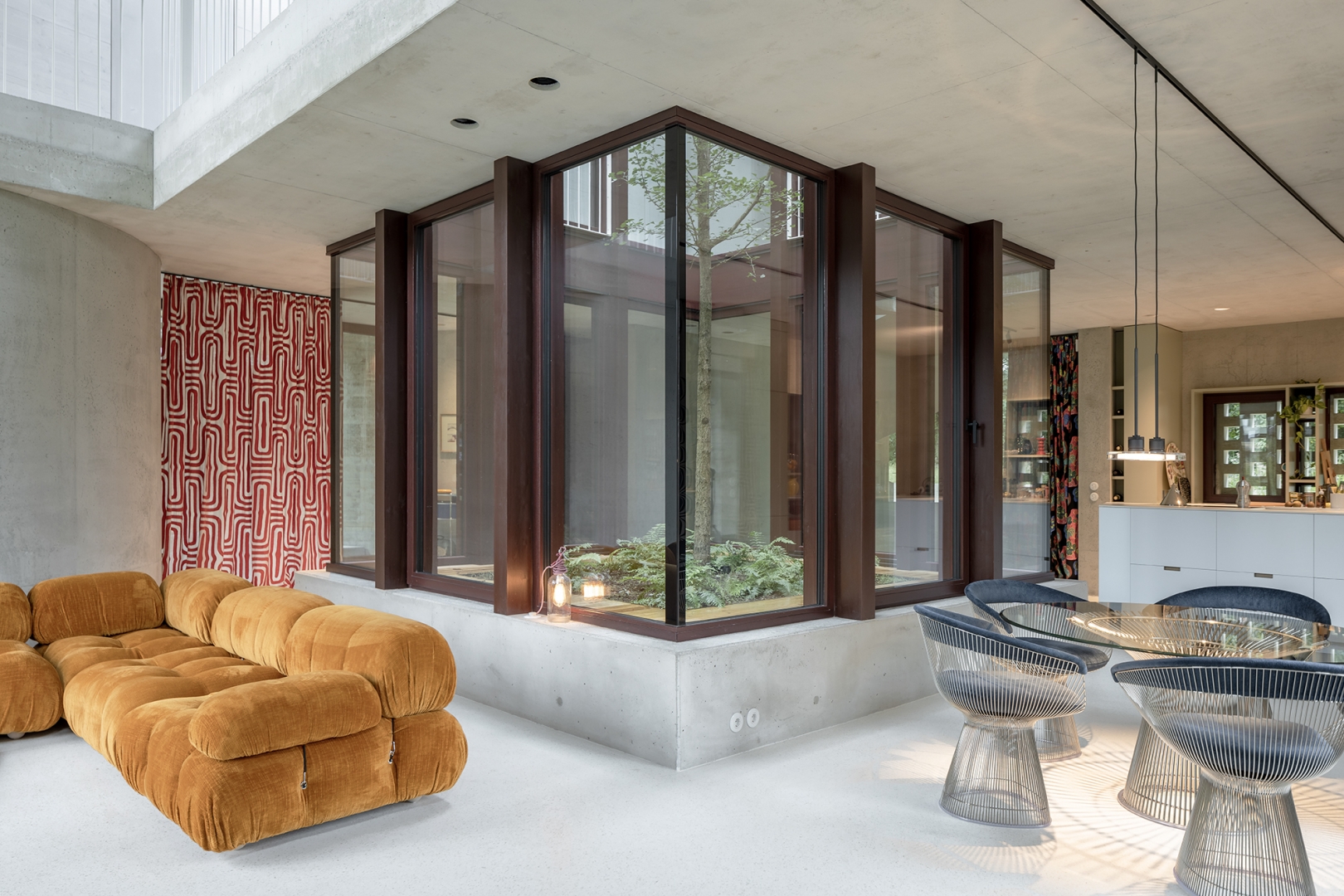
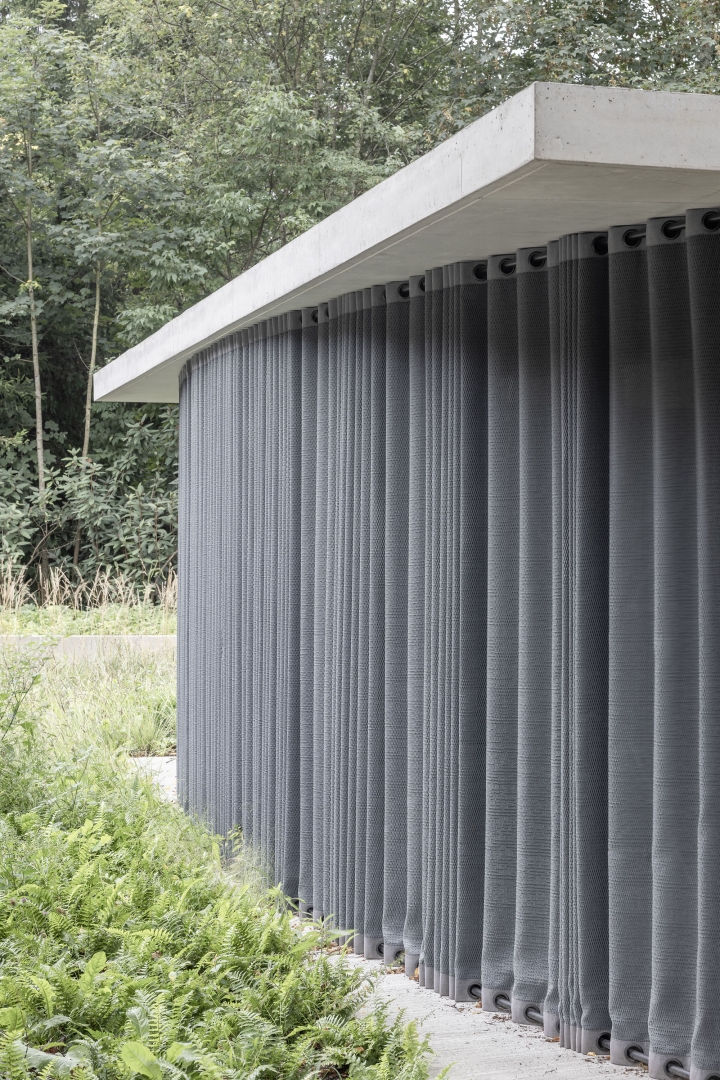
But the foreign references have not sapped the Zell dialect from the project. Far from it. The Japanese quotation seems curiously at home. And encouraged by Kahn’s Bath House, the design has avoided the temptation to disguise the pitched roof, as modern architecture tends to. Instead, the house wears its steep slopes with pride. Nor is the overhang coy. It extends generously and plays with the wooden screens underneath, which seem like a natural progression in delicacy and craftsmanship from the neighboring houses half hidden in the Alpine woods.
Photos by Florian Holzherr
